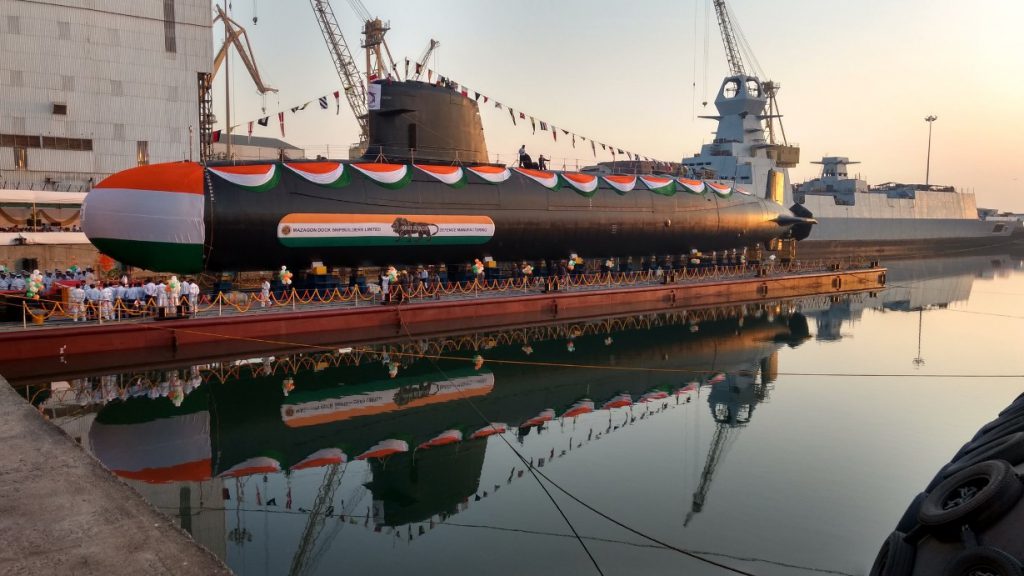Maritime competition and naval power in the Indo-Pacific: China’s interests and India’s security

Over the last decade, India’s progressive economic and military development has resulted in a strategic rebalancing of the geopolitical and security dynamics shaping power relations in South Asia. As China continues to expand its influence, particularly in the Indian Ocean and the larger Indo-Pacific, Beijing appears to be revealing a grand strategy that implicitly seeks to retain influence in strategic maritime zones that are also vital to Indian interests. Such a strategy threatens New Delhi’s ability to maintain credible control over regions of economic and political importance, which increases the likelihood of the two countries facing destabilised power relations.
As part of China’s new strategy to secure marine interests and increase maritime power, the Chinese government has targeted for as much as 85% of the foreign crude oil purchased by China to be carried by Chinese-controlled ships. At the end of 2014, 625 ships were on order for Chinese fleet owners (PDF), 80 of which were super-large oil tankers. Once these ships are constructed and delivered, China will become the largest tanker owner in the world. The objective of oil tanker fleet growth is two-fold: first, the degree of control China will have over oil transiting strategic lines of communication (SLOCs), like those in the Indian Ocean, will increase as a larger merchant marine and tanker fleet will provide Beijing with legal and administrative pretext to intervene on behalf of Chinese companies and organizations operating in the region; second, this pretext will directly improve the energy
China’s reliance on Indian Ocean SLOCs has given rise to security concerns in Beijing because the surrounding region is exceedingly vulnerable to foreign disruption compared to other critical maritime zones closer to the Chinese mainland, such as the South China Sea, where sea control capabilities are relatively significant. Beijing’s understanding that commercial maritime traffic and a substantial portion of the country’s oil supply could be interrupted has reinforced its commitment to sea control capacity growth in the Indian Ocean region. That growth has centered on a major resource and human capital investment in naval modernisation, which has already begun improving the capability of the PLAN fleet to exert influence, defend strategic interests and conduct operations beyond the country’s near-seas region.
China’s evolving naval capabilities have transformed the average PLAN surface combatant into a capable multi-mission platform. The improvements to surface and sub-surface vessels, combined with the deployment of increasingly accurate and long-range offensive missile systems aboard those platforms, have transitioned the PLAN (PDF) from a strictly regional fighting force to one capable of limited, distant power projection.
In addition, over the last decade the PLAN has been using more complex and realistic training programs to ensure that its expanding arsenal of high-technology weapons is being properly employed and that combat preparedness across the fleet is sufficient. Central to the new training programs are high-end naval combat tasks that are designed to teach PLAN commanders the fundamentals of fleet action in hostile environments where a foreign navy is actively intervening against Chinese national interests.
Also adding to Chinese encroachment anxiety in New Delhi has been the expansion of Chinese port facilities throughout the Indian Ocean region, which has enhanced Beijing’s ability to resupply, forward deploy, and maintain a naval and merchant marine presence in areas far away from the Chinese mainland. The construction of a port in Gwadar, Pakistan, and the development of a permanent facility at Obock harbour in Djibouti are central components of Beijing’s strategic manoeuvring. Those facilities have introduced a deep-water basing capacity for the PLAN and Chinese commercial marine fleets—a new opportunity for Beijing to establish itself as a permanent maritime player in the Indian Ocean.
China’s naval modernisation and its aggressive strategy of utilising highly advanced warships, foreign bases and a large civil commercial shipping fleet are challenging India’s ability to secure its vital SLOCs between the Persian Gulf, Europe and East Asia. Indian policymakers have revised the country’s maritime doctrine so that it prioritises reflexive naval modernisation and capacity-building to augment a more proactive and firm foreign policy. As a result of its modernisation efforts over the past decade, India has inherited the position of one of the largest navies in the world with carrier-based air power, an expanding fleet of modern major surface combatants, and conventional and nuclear-powered submarines. The navy’s evolution has demonstrated New Delhi’s ambition to project influence and power across the Indian Ocean region and beyond—both to ensure guaranteed access to and use of SLOCs, and to develop the necessary capabilities to offset strategic gains made by China in the region.
That proactive strategy underwrites a similar trend in newly constructed Indian maritime doctrine that calls for the transition from forward presence to forward projection. An enhanced naval force structure that has the capacity and capabilities to sustain such a projection strategy and compete with an increasingly powerful PLAN will assist New Delhi in attaining security over national interests and defending against proactive threats to critical trade routes, maritime economic resources and its own merchant marine fleet.









